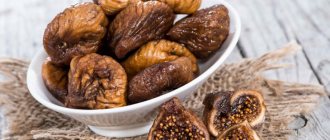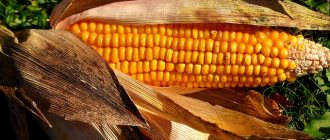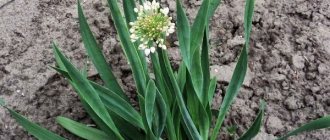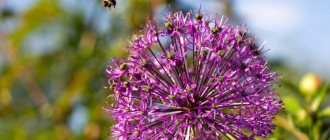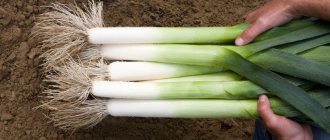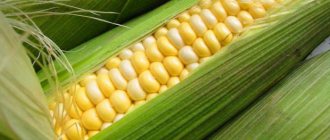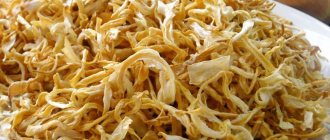Dried onions: features and benefits
Although it may seem to many that drying onions is a modern method of preparing vegetable products, this method has been successfully used for more than one millennium. Thus, it is known that the product in this form was very popular among the ancient Romans. The interest of modern consumers in dried spices is explained by the presence of several important advantages:
- a vegetable that has undergone this treatment does not rot or mold;
- in cooking, such a product can be used without restrictions;
- the total mass of the final product is reduced by 5 times, and the volume by 10 times compared to fresh onions;
- Dried onions do not require special storage conditions.
Terms and conditions of storage
Any dried product is characterized by an increased ability to absorb moisture , and onions are no exception. High humidity in the storage area causes the development of rot and mold; such a product can no longer be eaten.
Attention! Large volumes of dried onions - more than 1 kg - are stored in a cool, ventilated place, such as a basement or cellar. Humidity in the room should be moderate, no more than 70%.
Vegetables dried for winter storage, chopped onion or green, are stored in plastic or glass containers with lids. Cardboard boxes and paper bags are also used as packaging. It is preferable to use small containers.
The packaged product is placed in a cool, dry place out of direct sunlight . For daily use, it is convenient to pour the seasoning into jars with a tight-fitting lid. Small volumes are well stored in the kitchen (in a closet or bedside table).
Advice. Place a fabric bag with rice in the container with the dry product - it absorbs moisture well.
Whole pieces of dried onion, if stored properly, are suitable for use for two years . But in ground form, the seasoning quickly fizzles out and loses its taste. For this reason, it is advisable to grind onions in small quantities before use.
Types of dried onions
If you are going to transform the usual onion heads into a more ergonomic shape, you should know the basic techniques of the process:
- Drying using a special drum is considered the simplest option. This processing method is characterized by exposure of the crushed product to hot air.
- Spraying powder. The method is used to obtain a powder concentrate by spraying crushed raw materials in the air. Although such a product is very convenient to use, as a result of such processing, almost all essential components evaporate.
- Freeze drying is considered the safest, although very time-consuming, option. The technology consists of freezing prepared raw materials and then vacuumizing them. This means that the moisture contained in the raw product immediately passes into a gaseous state, bypassing the liquid fraction. During this processing, only volatile compounds, that is, esters, are lost. When soaked, freeze-dried spice exhibits exactly the same taste and aroma qualities as a fresh vegetable.
Dried onion seasoning is ideal for preparing a variety of dishes, including even baking. Fried and baked vegetables have a much smaller scope of application.
Rules for choosing green onions for drying
There are no special requirements for the selection of green onions - feathers can be of different lengths and thicknesses, as well as colors. The only thing you need to pay attention to is the presence of signs of decay. If they exist, it is better to discard the onion completely. In this case, the taste of the leaf will be worse, and this will affect the quality of the entire batch of seasoning.
It is believed that only young feathers are suitable for preparing dry green onions. This is wrong. Adult onion leaves that are slightly overgrown and rough are also suitable for processing. The main thing is that there is no wilting: it can be identified by yellowing.
When buying onions in a store, pay attention to their aroma. The more pronounced it is, the better the quality of the workpiece.
Chemical composition of spice
When planning to choose the optimal option for drying onions, you must take into account the degree of dehydration of the product for each individual processing method. It is better to give preference to the technique that allows you to preserve as much as possible all the useful components of the onion.
The dried product, like fresh root vegetables, contains the following groups of useful substances:
- Vitamin complex . These are ascorbic and nicotinic acid, tocopherol and almost completely vitamin group “B”.
- Minerals . Onions are rich in substances beneficial to the body such as phosphorus, zinc, selenium, manganese, and sodium.
If the drying technology is followed, the composition of the resulting spice is practically no different from the composition of the original product. Only the concentration of useful elements increases due to the loss of liquid from the product.
How to dry onions for the winter at home
If the onion harvest is successful, but there are no large premises for storing it, then the natural question that arises is whether it is possible to preserve the heads and at the same time save space. This can be done by drying onions using household appliances or in the open air. First, it needs to be peeled, washed and dried, and then cut into rings, half rings or small cubes. The cut pieces should be 3–5 mm thick. After drying, 1 kg of fresh product will yield about 100–120 g of dried product.
In the oven
The technology for drying chopped onions in the oven looks like this:
- Preheat the oven to a temperature of +50…+60°C.
- Cover a baking sheet with parchment.
- Place chopped onions on it in one layer.
- Place the baking sheet in the oven.
- The oven lid must not be closed completely.
- Dry the bulbs for 5–6 hours, green onions for 3–4 hours.
In an electric dryer
In an electric dryer, the vegetable is dried at a temperature of +55...+65°C for 7 hours. The lid is not completely closed when drying. The drying process can be shortened by first boiling the chopped vegetable in water for 3-4 minutes.
In a convection oven
The use of an air fryer can significantly reduce drying time. You need to set the temperature in it to +70°C. The duration of the procedure is 1 hour.
On air
For those who do not have the devices described above, there is also a way out - you can simply dry the onions in the fresh air.
They do this as follows:
- Arrange the chopped vegetables in a single layer on mesh racks.
- The top of the grates can be covered with gauze to protect against insects.
- Place the grates in a shaded, well-ventilated place.
- The onions need to be stirred every day to ensure even drying.
- The vegetable is kept in this state until completely dry.
Benefits of dried seasoning
Since dried onions retain the entire set of useful components listed above, its effect on the body is manifested in the following positive actions:
- strengthens the immune system;
- stabilizes blood pressure;
- thins and removes mucus;
- has a weak laxative effect;
- helps with various types of vitamin deficiency;
- promotes the removal of excess fluid;
- normalizes blood circulation;
- improves digestion;
- stimulates the production of liver secretions.
The presence of small portions of dried onions will have a beneficial effect on the functioning of the entire body and will become an effective preventative against colds.
Preparing onions for drying and storage
First you need to carefully dig up the onion so as not to damage the roots, because then the onion will quickly begin to rot and is unlikely to last a whole year.
Under no circumstances should you pull out the bulbs, throw them in a pile or knock them, as they will not only be damaged, but will also deteriorate in a short time.
If the weather is sunny outside, the onions should be placed in the sun. You need to think in advance whether the onions will be stored in a braid or net, since only onions with long tails will be needed for the braid.
Next, you need to inspect each onion and set aside for immediate use those that have begun to deteriorate. They must not be stored under any circumstances.
It is imperative to trim off dried dry leaves.
To do this, you will need scissors; with them you need to trim the dry leaves so that the neck, which is 4-6 cm long, as well as the roots remain.
It must be remembered that the bottom of the onion should not be touched under any circumstances, otherwise the onion will spoil.
You need to store only those bulbs that are strong to the touch and do not have any damage, as well as sprouts. This is the preparation of onions for storage.
It is worth noting that not all varieties of onions are stored equally. Only late and sharp varieties last until spring; they are distinguished by their high keeping quality.
Most experts advise storing onions in braids, since in this case almost all the bulbs are preserved. Of course, no one forbids storing it in a net or stocking, as our grandmothers used to do.
Contraindications
But if you want to enrich your diet by including dried onions, you need to take into account contraindications for use. You cannot use the spice in this form in the following cases:
- during pregnancy and breastfeeding;
- in the presence of lesions of the oral mucosa;
- persons with gastrointestinal pathologies;
- patients suffering from pancreatitis;
- for bronchial asthma;
- those who have liver problems;
- in case of individual intolerance to the product.
As you can see, the list of restrictions on the use of dried onion spice is very extensive. Therefore, to eliminate possible health risks, it is better to consult a doctor about the use of such a controversial product.
Dried onions - composition and calorie content, beneficial properties and harm
Calorie content: 218.5 kcal.
Energy value of the product Dried onions: Proteins: 8.4 g. Fats: 2.8 g.
Carbohydrates: 42.6 g.
Description
Dried onions are a natural product that can be an alternative to any seasoning. Compared to other store-bought spices, homemade dried onions have a richer aroma and a high content of nutrients.
With its help, it will be possible to improve the taste of any dish, enrich it with additional iodine, glucose, essential oil, vitamins C, A, B1. You can dry onions purchased or grown in your own beds.
In the second case, it requires proper cleaning and preparation for drying.
What are the benefits of dried product?
What are the benefits of dried product? Its benefits are presented as follows:
- Strengthening the immune system. Dried onions block the effects of harmful organisms, such as streptococci and trichomonas, which cause diseases.
- Antihistamine properties. Dried vegetables eliminate any parasites better than pharmaceutical preparations.
- Treatment and prevention of colds. The plant protects the body from various pathogenic microbes and bacteria.
- Fighting hypertension. A tincture of dried vegetables or garlic with lemon juice can improve your health. If you drink a tablespoon of the drink three times a day before meals, you will be able to block the symptoms of the disease.
- Expectorant effect. To completely remove phlegm, you need to consume a tablespoon of dried onion with honey for 2-3 days.
- Supporting the body with diabetes. Slightly chop three small onions, pour 300 ml of warm water over them and leave to steep for 8-9 hours. You can also use the following solution: dissolve 20 grams of dry onion in a glass of water. It is drunk throughout the day in small portions.
- Effective diuretic. Dried onions provide invaluable benefits to the body if there are problems with the bladder, as well as swelling. You need to mix a little wine and 25 grams of dry onion (pre-chopped). You need to drink this composition for 10 days, 5 ml. During an exacerbation, as well as when signs of cystitis appear, it is recommended to increase the dose to 10 ml and use 3 times a day for 10 days.
- Laxative. A tincture based on dried onions will help deal with a delicate problem quite quickly. The tincture is prepared from 200 ml of vodka and 450 grams of dry onions. The product should be infused for 10 days, after which you need to consume 5 ml of tincture before meals for 30 days.
- Treatment of scurvy. This problem occurs when there is a low content of vitamin C in the body. It manifests itself in tooth decay and tooth loss. You can prevent the development of pathology if you regularly include dried onions in your diet.
- Fighting hepatitis. Jaundice can leave behind serious consequences. To minimize its effect, you need to eat dried onions in a special way. The mixture is prepared from 15 grams of dried onions, 50 grams of honey, 10 grams of ground wormwood, 500 ml of dry wine. The result is a tincture, which is taken 2-3 ml before meals three times a day.
Despite the enormous benefits of onions, harm from its use is still possible. Gastroenterologists include the following main contraindications:
- Lactation period in women. If you ignore the recommendation not to eat dry onions during this period, the newborn may refuse mother's milk.
- Pregnancy. During this period, the fair sex should eat fruits and vegetables, as well as protein foods. You should also consult your doctor regarding your desire to use any seasonings in your food. When eaten fresh, the vegetable is very healthy and is even indicated for pregnant women due to its significant folic acid content, but when dried it should be avoided.
- Oral diseases. Onions can cause irritation to the mucous membranes. In the presence of caries and periodontal disease, the vegetable can increase bad breath.
- Pancreatitis. Seasonings in the diet are unacceptable, as their use can be fatal.
- Diseases of the gastrointestinal tract, especially ulcers. Dried onions are taboo, because they are classified as spicy seasonings.
- Certain forms of gastritis (especially with high acidity). Dried onions irritate the stomach walls and can cause belching, heartburn and epigastric pain.
- Liver diseases. If you have any liver disease, adding dried onions to your diet is not allowed.
- Bronchial asthma. In addition to dried onions, you need to exclude dairy products, confectionery treats, pasta, a significant portion of fish varieties, fruit-based yoghurts, and eggs from your diet.
- Allergic reaction. It becomes a consequence of individual intolerance and can manifest itself in different ways. With significant consumption of dry onions, there is a high probability of developing pulmonary edema, suffocation and even urgent hospitalization.
What onions can be dried?
What onions can be dried? This is a pressing question for those people who have decided to provide themselves with a tasty and healthy seasoning. Currently, more than 1000 varieties of onions are known, but not all are recognized as edible. Let's take a look at the most common of them:
- Onion. The variety is also sometimes called pipe or sandy. The plant is perennial. Its distinctive feature is the absence of bulbs and the presence of powerful stems. Onion leaves can reach up to 50 cm in length. It is noteworthy that from the beginning of the season until persistent autumn frosts, the leaves continue to grow. Harvesting is allowed approximately three times a week.
- Onion. It is distinguished by long, tube-like leaves of a rich green color that are hollow inside. The bulbs of this variety are large in size, and their husks are yellow, purple or white, depending on the subspecies. This is a common variety that is easy to care for.
- Chives. It is also called speed. The vegetable has small leaves that have a very delicate taste. The plant can be harvested several times a season. Only the leaves of the plant are used for food. Thanks to its beautiful flowers, the vegetable is often grown as an ornamental plant.
- Shallot. Its other names are magpie or kuschevka. The plant is distinguished by the presence of small bulbs of a light purple or white hue in the shape of an oval or circle. The plant is also distinguished by narrow leaves that reach 45 cm in length. Onions are in great demand, as their bulbs are juicy and soft, and their greens are tender.
- Slime bow. It is distinguished by ribbon-shaped leaves that are juicy and slightly pungent in taste. The smell of onions is slightly garlicky. The plant does not have bulbs as such, so only its leaves are used.
- Leek. It is often called pearl or grape. This plant is grown everywhere and has a pleasant aroma and taste.
- Garlic. This plant also belongs to the onion family. Garlic is divided into types - winter and spring. The product is in demand due to its taste (it is spicy and quite stable) and antiseptic effect. Garlic in any form, both raw and dried, is incredibly popular.
- Cheremsha. This is an edible variety of onion that grows in the forest. Thanks to its unusual pungent taste, the plant is called wild garlic, as well as bear onion for its significant vitamin content. Everything is eaten - leaves, stems and bulbs.
- Branched onion (often called jusai or fragrant vegetable) is a plant, all parts of which are edible. Their distinctive feature is their onion-garlic taste. The dried product is used as a seasoning for fish and meat, for preparing side dishes and pies.
Cooking at home
Cooking at home first comes down to choosing a method. Most often, onions are dried, but you can also use onions of other varieties that can be introduced into the diet. Drying is done in crushed form: cubes, rings or half rings. The optimal thickness of the sliced product is 3-5 mm.
If you plan to dry green onions as a seasoning for the winter, then before drying you need to rinse the product and dry it from moisture by placing it on a towel. The onion can be cut to any thickness, taking into account your own preferences.
In the oven
Dried onions are most often cooked in the oven. You need to place onion rings or half rings on baking sheets that are previously covered with parchment. The oven must first be preheated to a temperature of 50-60 degrees, and only then the baking sheets with onions are placed there.
The oven door must be left ajar throughout the entire cooking time. The cuttings should be stirred periodically to check the degree of readiness. On average, drying takes 5-6 hours.
Green onions need to be dried separately, as this process does not take more than 2-3 hours.
On air
It is easy to air dry onions without any financial costs. You need to chop or cut the onion into rings and place on boards or grates. The latter are located in a well-ventilated place where direct sunlight does not reach.
From time to time you need to stir the product to ensure uniform drying. On average, the process takes about 10-14 days.
It is important! You can dry onions fresh or fried. In the latter case, it will be more tasty, giving dishes a piquant flavor. First you need to cut the onion into slices, fry it in a frying pan, and then place it on a baking sheet and send it to dry using one of the methods described above.
Using dried onions
The uses of dried onions are very diverse. The product in the form of a seasoning perfectly complements a vegetable, mushroom, meat or fish dish. In general, it goes well with any savory delicacies. You can replace fresh onions with dried ones in any dish. At the same time, during cooking, onions can be used chopped or ground.
Most often, dried onions are used for cooking:
- salads that do not require the use of raw juicy onions;
- soups;
- second courses;
- marinade;
- pies;
- minced meat;
- sandwiches (even just bread with dried onions will be very tasty);
- snacks;
- conservation;
- certain desserts.
Dried onion flakes can be used as a seasoning or as an independent ingredient. In the latter case, it can be used to prepare onion soup.
Today you can buy ready-made dried onions in stores. According to GOST and TU, it is cut into cubes and dried to a brittle state.
It is important! Drying onions should be done in boxes or other containers that can be fully ventilated. It is recommended to dose the product in 5-6 kilogram quantities for an optimal drying process.
The boxes should be kept in a dark and fairly cool place, such as a cellar or basement.
Dried green onions can be stored in sealed jars out of direct sunlight.
Onions are a unique product that can retain beneficial properties for a long time even after heat treatment.
If there are no contraindications, then you can use dried onions as a seasoning for any dishes on your everyday or holiday table.
You can prepare dried onions for the winter, because the product has high nutritional value and can make the taste of dishes more intense.
Beef chips
480 min.
Similar food products
- Dried garlic
- White pepper
- Ground white pepper
- Ground bird cherry
Minerals
| Iron | 5 mg |
| Phosphorus | 348 mg |
| Potassium | 1050 mg |
| Sodium | 108 mg |
| Magnesium | 84 mg |
| Calcium | 186 mg |
Source: https://xcook.info/product/sushenyj-luk.html
What types of onions can be dried
Onions are not only the usual heads of a spicy vegetable or green fragrant feathers that we gladly add to food. The onion family includes many different species. Moreover, not every type of onion is suitable for drying. Therefore, it is worth remembering those varieties that can be safely subjected to such processing:
- Onion - Batun , better known as summer onion. This variety does not form bulbs, but has very powerful stems.
- Onions are considered the most common variety. Depending on the variety, the heads can be colored from white to purple.
- Leek. This is also a familiar variety. Dried leeks have a very pleasant aroma and rich flavor bouquet. Interestingly, only the leaves and stem are eaten, although this species has well-formed heads.
- The Shnit variety has an elegant taste, but its leaves are very small. But such onions can be harvested several times a season.
- Shallots are also a very popular onion variety, which attracts people with their very juicy bulbs.
- Slime does not form bulbs. But its juicy foliage with a pungent flavor is highly valued in cooking. The aroma of this type of onion is very similar to garlic.
- Jusayem or branched onion is considered an exotic variety for our latitudes. But the dried product is great for meat and fish; it is added to pies and side dishes.
Specifics of drying bulbs
After harvesting, due attention must be paid to drying. This process is necessary for further long-term storage of the vegetable.
Chernushki
The collected seeds are dried in a warm room. To do this, pour nigella onto a cloth and spread it in a thin layer.
Once the seeds are dry, they are placed in a cloth bag and stored in a cool room.
Onion
In hot weather, turnips are laid out on sheets of plywood and dried in the sun for 2 days. Afterwards, the harvest is transferred to the summer kitchen, where the temperature is kept within +25 degrees. The vegetables distributed over the net are dried for 2 weeks. During this time, the onion is turned over daily to dry it on all sides. Then they sort through, cut off the roots and tops, and pack them into nets.
See also
TOP 5 ways to properly dry prunes for the winter at home
Read
Sevka
In clear, warm weather, the sets are laid out in an even layer on fabric and dried for a week and a half. At night, the crop is covered with oilcloth to avoid getting wet when morning dew appears. After drying, the seedlings are placed in 3 kilogram fabric bags, after cutting off the tops.
Green onion feathers
To preserve the feathers of green onions throughout the winter, you need to dry them: in the oven, electric dryer, convection oven. To do this, wash the greens, dry them with a napkin, and chop them finely. The slices are distributed on a baking sheet covered with parchment and placed in an oven preheated to 60 degrees for 2 hours, stirring occasionally. The finished seasoning is placed in a dark place for long-term storage.
Home drying methods
After familiarizing yourself with the features of the product, you can begin to study the technology itself. By the way, regardless of the harvesting method, there is a preparatory stage that is almost the same for different drying options. Therefore, before drying onions, you must first prepare the material.
- For drying, it is necessary to select healthy specimens without signs of rot. Moreover, the bulbs should be well dried in the sun.
- The selected heads should be crushed: they can be cut into slices or half rings.
- The prepared semi-finished product is laid out on a baking sheet or clean sheets of cardboard.
- If the onion is air dried naturally, it needs to be stirred periodically.
- When the workpieces acquire elasticity and a golden hue, the finished material must be placed in a container.
- Air drying takes about two weeks on average.
Drying in the oven helps save time. Preparation is similar to the first method. The technique differs only in that the workpiece is laid out on a baking sheet, which is then sent to the oven for two hours. Drying is carried out at a temperature of 45-50 C.
The best option is to process onions in an electric dryer or microwave. This method guarantees maximum preservation of nutrients and significant time savings. True, this method is relevant when you need to dry a small amount of raw materials.
Many modern housewives dry onions in an air fryer. This procedure takes no more than an hour if you select the maximum speed of the hot air jet.
If you strictly adhere to the technology of the chosen onion drying method, the finished product will retain its quality for two years.
Drying technology
Since drying requires a lot of space, it is convenient to dry turnips in portions of 3-4 kg . Let's talk about the intricacies of the process in more detail.
What is necessary
To prepare a tasty and healthy product, you only need fresh onions , collected from the garden or purchased in a store. There is no need to add any preservatives for preservation.
Onion preparation
Fresh onions are peeled from dry scales and chopped by hand or using a food processor . Cut the vegetable into rings, half rings or cubes. It is worth considering that the larger the pieces, the longer they will dry.
Drying
The prepared product is distributed on baking sheets or racks and, depending on the chosen drying method, placed in a preheated oven, electric dryer or air fryer. Or air dry in a ventilated place.
During the drying process using any of the selected methods, the onions are periodically stirred and checked for readiness. The finished product has a pleasant caramel color, becomes fragile and aromatic.
Take note:
How to pickle red onions
How to make pickled leeks
How to salt green onions for the winter
The benefits and harms of dried onions
Since ancient times, people have valued onions not only for their ability to improve the quality of dishes. It was used to prevent and treat many diseases. When dried, some properties become more pronounced. Benefits of dried onions:
- Thanks to vitamin C, phytoncides and other biologically active substances, the seasoning helps fight colds.
- Has expectorant properties.
- Protects the immune system from pathogens.
- Famous for its antihistamine properties.
- It is used to make a tincture with lemon juice and garlic to treat hypertension.
- Has a mild diuretic effect.
If gynecologists advise pregnant women to consume onions in fresh form in moderation due to the presence of folic acid, then in dried form they should abstain. There is still debate about the time of breastfeeding a baby, since a child may simply refuse milk due to the specific taste.
It is strictly not recommended to use dried onions for problems in the oral area, liver diseases, intestinal and stomach ulcers, pancreatitis and gastritis. Individual intolerance is also a contraindication.
Using dried onions
The seasoning is used in most savory dishes. At the same time, it can be added either in whole or in ground form. Dried onions are more common in the following recipes:
- in snacks;
- in soups;
- in second courses;
- in pies;
- in bread;
- in marinades;
- in sauces;
- in winter preparations;
- in some desserts.
At home, you can also make a combined seasoning with it by mixing it with dried spices.
The beneficial properties of onions, which are preserved even after drying, cannot be underestimated. Its rich aroma and taste can improve the quality of almost any dish. Do you buy or prepare vegetables for the winter yourself? Or maybe you know how to cook it better?
In the oven
- Peel and cut the onion into rings no more than 5 mm thick.
- Line baking sheets with parchment paper in advance and place the pieces on them in one layer. There must be free space between the rings, otherwise they may stick together during drying.
- Preheat the oven to +70 °C and place the onions in there, while opening the door slightly. Make sure that the temperature does not rise, otherwise you risk burning the workpieces.
Oven drying may take up to 8 hours. If you overexpose the product, it will change color greatly. This can be avoided by first soaking the pieces in a saline solution. Dilute 50 g of salt in 1 liter of cold water and keep the onions there for 5 minutes.
To dry the onion faster, immerse the chopped rings in boiling water for 2 minutes. After this, place them in the oven at +70 °C for 2 hours. Then reduce the temperature to +40 °C and keep it there for another 1 hour. Constantly turn the onion over and remove any dry pieces.

